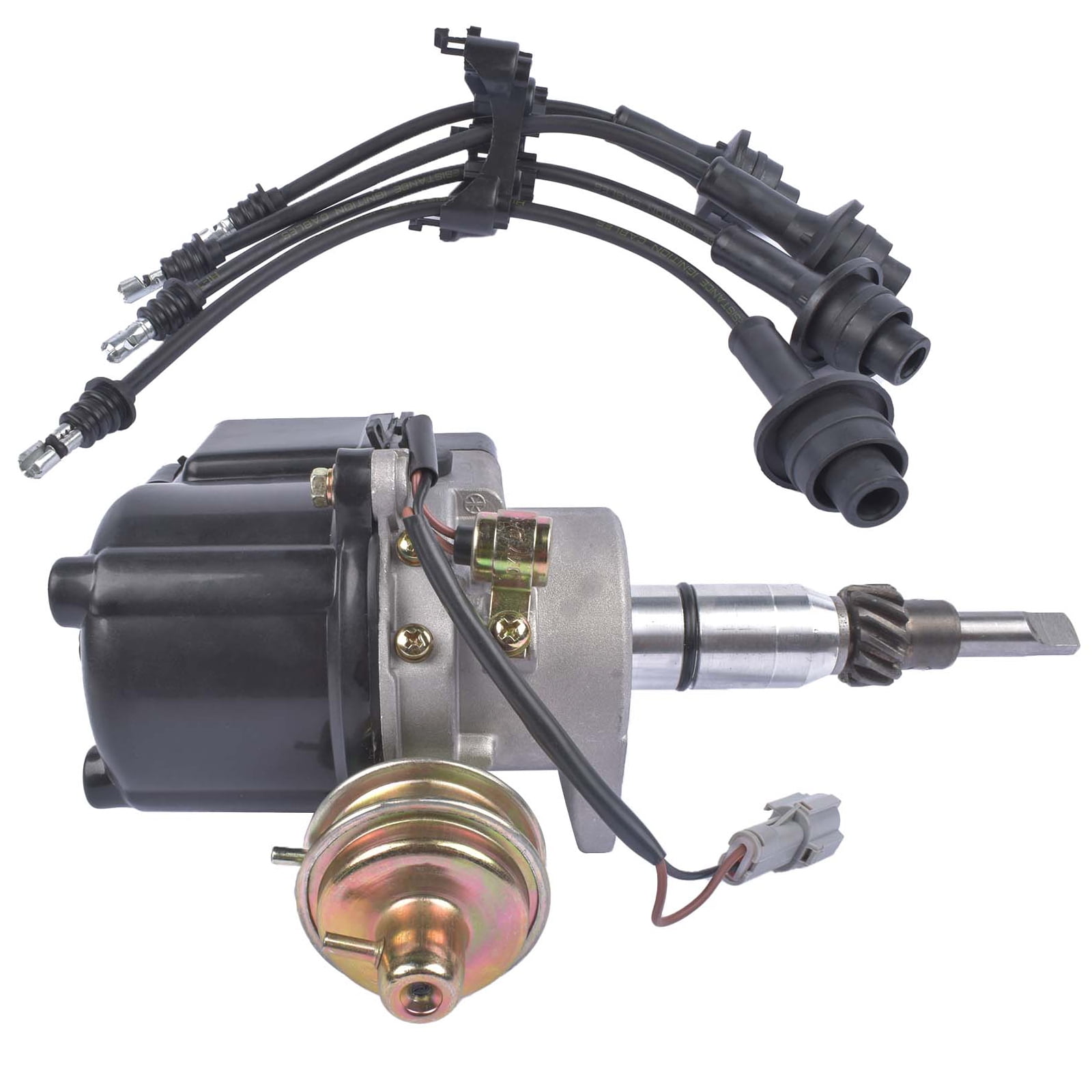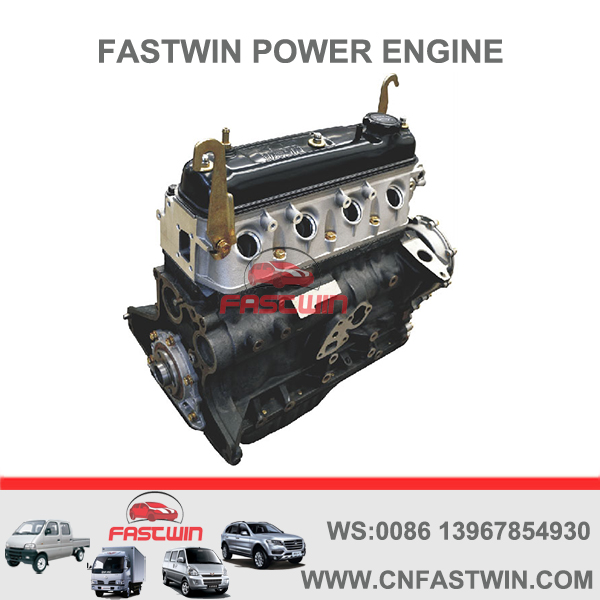The History and Evolution of the 4Y Engine in Automotive Engineering
The History and Evolution of the 4Y Engine in Automotive Engineering
Blog Article
The Ultimate Guide to the Engine: Key Insights for every single Auto Fanatic
Understanding the engine is essential for any automotive fanatic, as it offers as the heart of the automobile and dictates its efficiency. This guide supplies a thorough examination of engine makeup, kinds, and the auto mechanics behind their procedure, including the ingenious modern technologies that are reshaping the auto landscape. It highlights the essential nature of maintenance techniques that can significantly influence an engine's life expectancy. The complexities of engine characteristics and the most current innovations in innovation existing inquiries that merit additional exploration. What might these understandings expose about the future of auto design?
Composition of an Engine
Recognizing the composition of an engine is essential for any type of auto enthusiast seeking to dive much deeper into vehicle technicians. An interior burning engine largely contains a number of crucial components that operate in unison to transform gas right into power.
At the heart of this system exists the cylinder block, which houses the cylinders where burning takes place. Piston activity within these cyndrical tubes is assisted in by the crankshaft, which translates direct movement right into rotational power. Additionally, the camshaft plays a vital function in controlling the opening and closing of the engine's valves, guaranteeing proper air-fuel blend consumption and exhaust gas expulsion.
Various other important elements include the gas system, which provides the engine with the necessary fuel, and the ignition system, accountable for initiating combustion - 4y engine. The cooling and lubrication systems are likewise important, preserving optimum operating temperature levels and decreasing friction, respectively
Engine Kinds and Configurations
A diverse series of engine kinds and setups exists, each offering unique advantages and drawbacks customized to different driving demands and preferences. The most typical engine types consist of inline, V, flat, and rotating configurations.
Inline engines, including cyndrical tubes arranged in a single line, are recognized for their simplicity and performance. They are typically found in compact automobiles, offering an equilibrium of power and economic situation. V engines, defined by their two financial institutions of cyndrical tubes organized in a V form, give greater efficiency and smoother operation, making them preferred in sporting activities and luxury autos.
Level engines, or boxer engines, have actually flat opposed cyndrical tubes, which add to a reduced center of mass, improving automobile security. These are generally seen in brand names like Subaru and Porsche.
Rotary engines, although much less common, use an unique style with a triangular rotor and deal high power-to-weight proportions. They excel in compact and light-weight applications, primarily seen in Mazda cars.
Each engine kind offers details efficiency attributes, weight circulations, and gas efficiencies, ensuring that cars and truck fanatics can select the appropriate engine arrangement to match their driving style and car needs.

How Engines Work
Engines, regardless of their type or configuration, run on basic principles that regulate their performance and effectiveness. At their core, engines transform fuel into power via a collection of controlled explosions or compressions. This process generally involves four main strokes: intake, power, compression, and exhaust.
During the intake stroke, the engine attracts in a blend of air and fuel. In the power stroke, a trigger fires up the compressed blend (in gasoline engines) or the blend fires up spontaneously (in diesel engines), resulting in a quick development of gases that pushes the piston down.
The effectiveness of an engine is influenced by different factors, including the design of the burning chamber, the sort of fuel made use of, and the accuracy of the engine's elements. Recognizing these basic concepts is important for car lovers that look for to appreciate the detailed technicians behind their lorries, along with for those aiming to boost performance with alterations and adjusting.
Advancements in Engine Technology
Over the last read this few years, improvements in engine innovation have actually considerably transformed the automobile landscape, improving both performance and ecological sustainability. One of one of the most notable advancements is the development of turbocharging and supercharging, which enables smaller sized engines to create greater power outputs without giving up fuel effectiveness. This has brought about a rise in the appeal of downsized engines, supplying suppliers with the ability to meet stringent discharges guidelines while preserving efficiency criteria.
Additionally, crossbreed and electric powertrains are reshaping the engine paradigm. Crossbreed systems incorporate inner combustion engines with electrical motors, optimizing gas intake and decreasing emissions. Fully electrical lorries (EVs) get rid of the combustion engine completely, relying upon innovative battery innovation to provide instantaneous torque and outstanding velocity.
Additionally, the combination of man-made knowledge and artificial intelligence in engine monitoring systems enables for real-time optimization of visit site performance specifications, improving performance and responsiveness. Innovations such as variable valve timing and direct fuel shot even more refine burning procedures, making the most of power output while decreasing waste.
As the automobile industry remains to evolve, these developments in engine technology will play an important duty in forming the future of wheelchair, prioritizing both performance and sustainability.
Upkeep Tips for Fanatics
Maintaining an engine is as crucial as the technologies that boost its performance. Regular upkeep not just extends the life of your engine yet also ensures optimal efficiency.
Inspect and change air filters occasionally to ensure correct air flow, which is see this website essential for combustion performance. A stopped up air filter can cause reduced performance and enhanced gas intake. Similarly, check the coolant levels to stop overheating, and replace coolant according to the solution routine.

Verdict
In verdict, a complete understanding of engine anatomy, types, and mechanics is necessary for automotive lovers. Normal upkeep practices, including oil adjustments and air filter checks, are crucial for ensuring optimum engine capability and longevity.

Engines, no matter of their kind or configuration, run on basic principles that regulate their performance and efficiency. In the power stroke, a spark ignites the compressed combination (in fuel engines) or the blend fires up automatically (in diesel engines), resulting in a quick growth of gases that presses the piston down.In current years, advancements in engine modern technology have actually dramatically changed the vehicle landscape, improving both efficiency and environmental sustainability.
Report this page